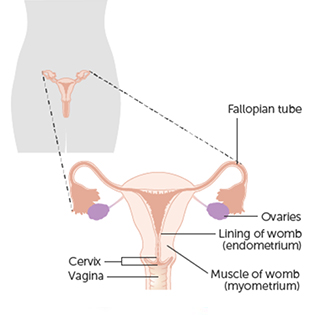Epithelial ovarian cancer is the most common type of ovarian cancer. Rare types include germ cell tumours, stromal tumours and sarcomas. Primary peritoneal cancer is similar to epithelial ovarian cancer and is treated in the same way.
Epithelial ovarian cancer
Epithelial ovarian cancer is the most common type of ovarian cancer. About 90 out of 100 tumours of the ovary (90%) are epithelial.
Teratoma of the ovary
Ovarian teratoma is a type of germ cell tumour. Cancerous teratomas are rare, and usually affect girls and young women up to their early 20s.
Granulosa tumour of the ovary
Granulosa tumours are a type of sex cord stromal tumours. Less than 5 out of 100 women with ovarian cancer (5%) have this type.
Primary peritoneal cancer
Primary peritoneal cancer (PPC) is a rare cancer of the peritoneum. It is very similar to the most common type of ovarian cancer called epithelial cancer.
Fallopian tube cancer
Cancer of the fallopian tubes is rare. Only around 1 in 100 cancers (1%) of the female reproductive system are this type.
Borderline ovarian tumours
Borderline ovarian tumours are abnormal cells that form in the tissue covering the ovary. They are not cancer and are usually cured with surgery.





